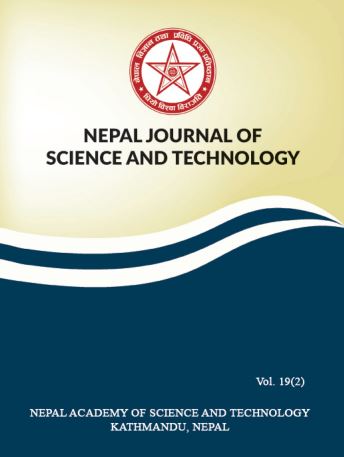Genetic Diversity of Nepalese Indigenous Cattle Breeds Based on D-Loop Mitochondrial DNA
DOI:
https://doi.org/10.3126/njst.v20i1.39440Keywords:
Ancestral, bos indicus, bos indicu, haplogroupsAbstract
Nepalese cattle are known for their genetic potentiality concerning inhabitant in extreme climatic conditions, surviving in the scarce food supply, and resistant to several diseases. We aimed to assess Nepal’s ancestral origin and genetic diversity of indigenous cattle breeds based on hyper-variable D loop mtDNA sequences. Three cattle breeds (Siri, Achammi, & Lulu) comprising the total sample population (n= 75) were employed in the study where the mt DNA information of two breeds (Achammi & Lulu) were retrieved from the published source. Hyper-variable D loop (910bp) of Siri cattle was PCR amplified and sequenced. This study claims that the possible ancestral origin of Bos taurus and Bos indicus mtDNA lineage in the Nepalese cattle population is majorly influenced by China and India, respectively. This study suggests that Nepalese cattle can be divided into two major groups: Bos taurus and Bos indicus, where most of the cattle population was of Bos indicus origin. The sampled population can be classified into three significant haplogroups: T3 (25%), I1 (48%), and I2 (27%) revealing a higher genetic diversity among the Nepalese cattle population. Only T3 taurine haplogroup was found in the sampled population. It was consistent with the fact that the absence of T1 haplogroup in North-East Asian cattle. In terms of Bos indicus, the I1 haplogroup was dominant over I2. Higher genetic diversity can be appropriate reasoning for Nepalese cattle’s survival in a harsh environment and low food conditions.
Downloads
Downloads
Published
How to Cite
Issue
Section
License
Copyright (c) 2021 Neena Amatya Gorkhali, Chhiring Sherpa, Aashish Dhakal, Sanjay Dhungana, Saroj Sapkota, Prashanna Koirala, Bhoj Raj Pokhrel, Manaraj Kolachhapati , Nirajan Bhattarai

This work is licensed under a Creative Commons Attribution-NonCommercial 4.0 International License.
Authors retain copyright and grant the journal right of first publication.




